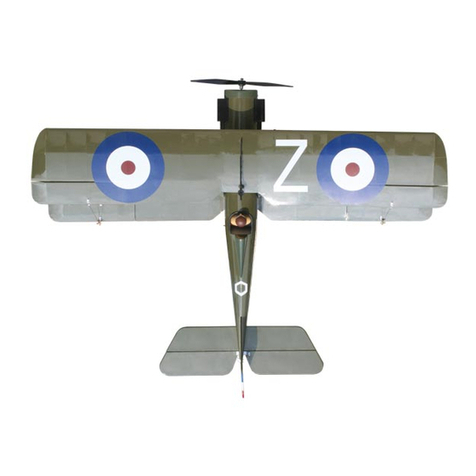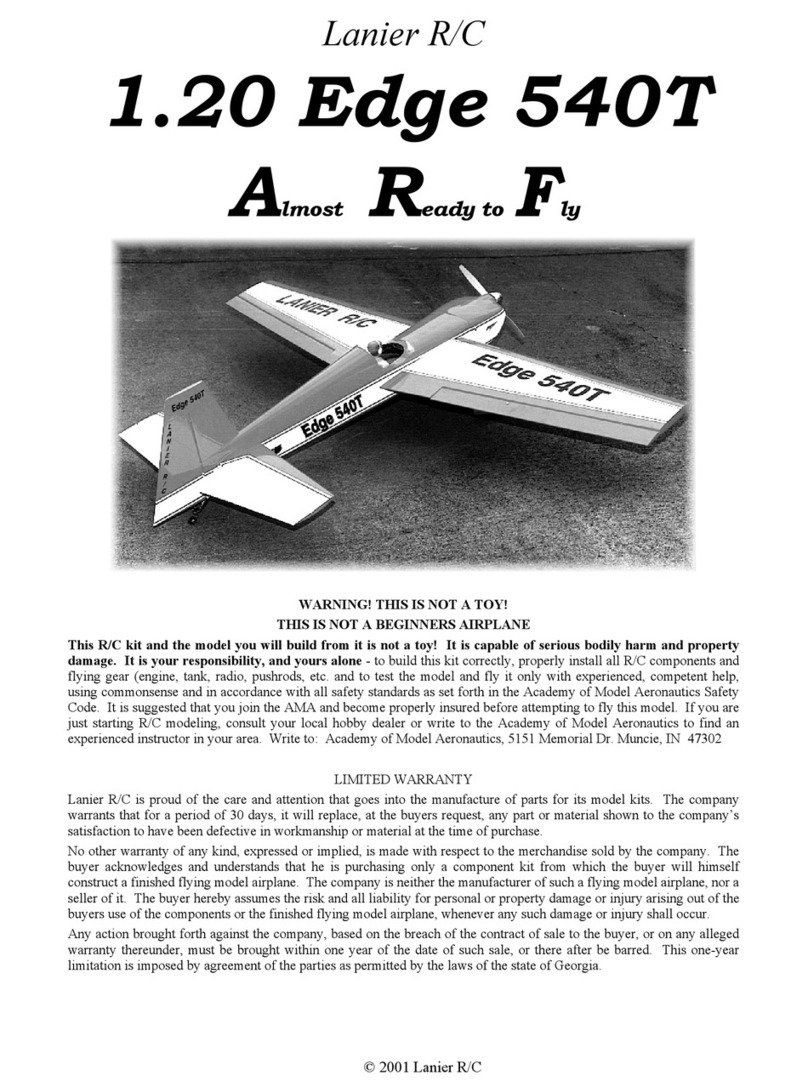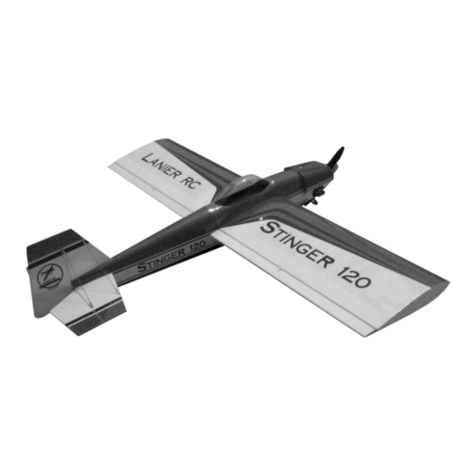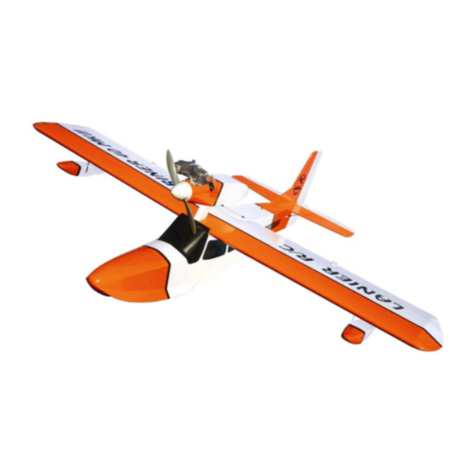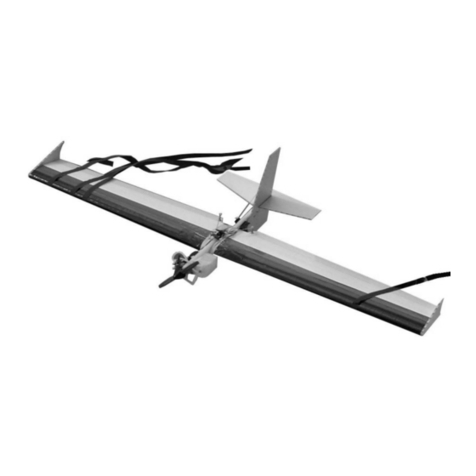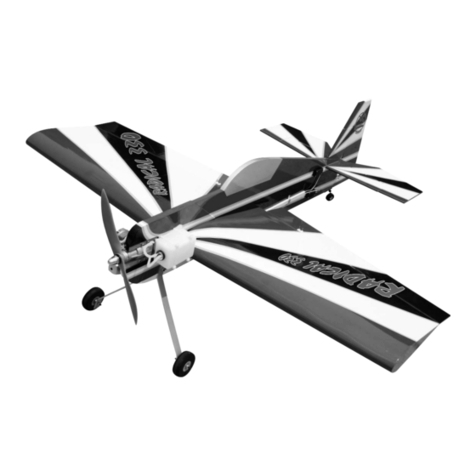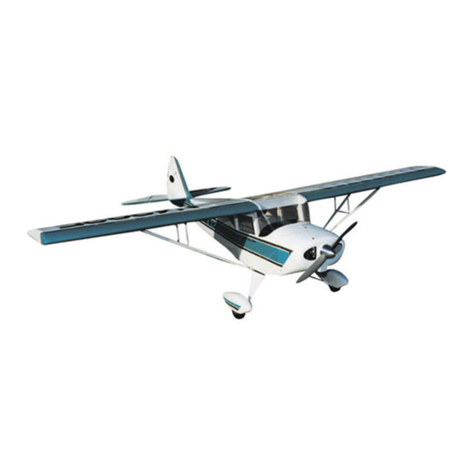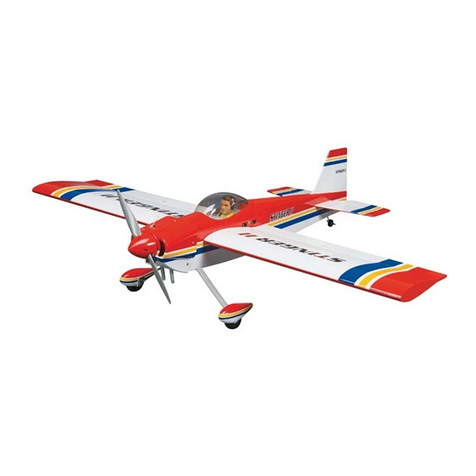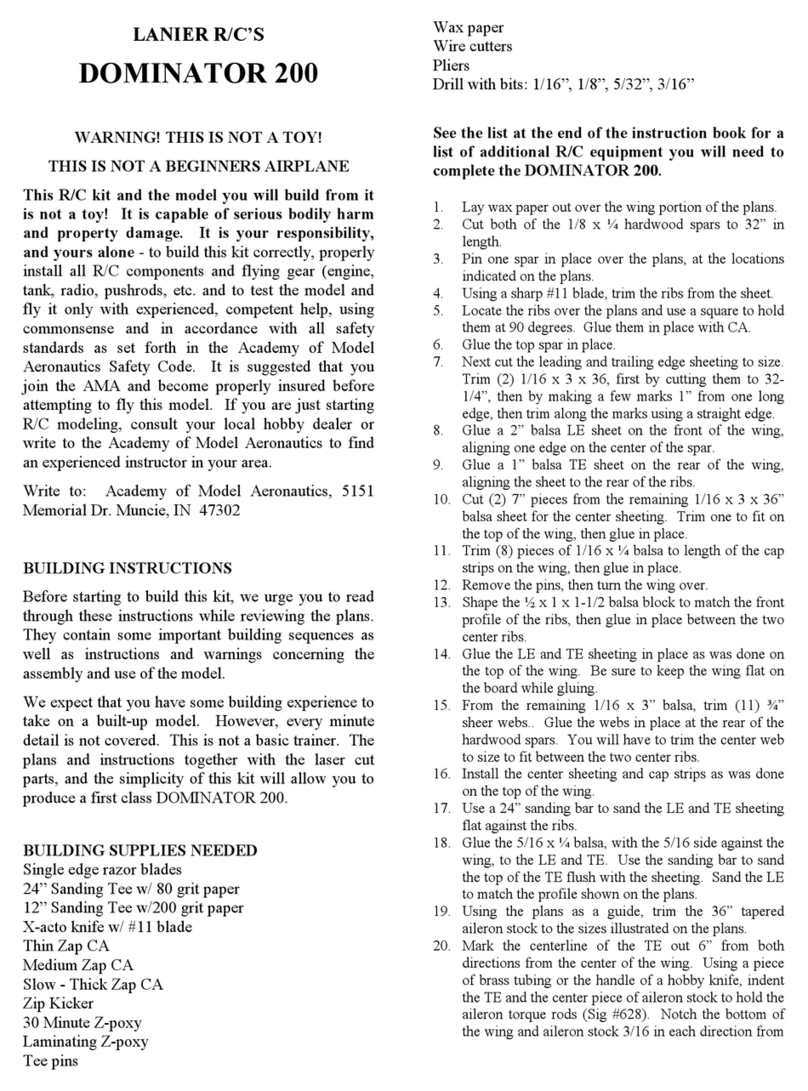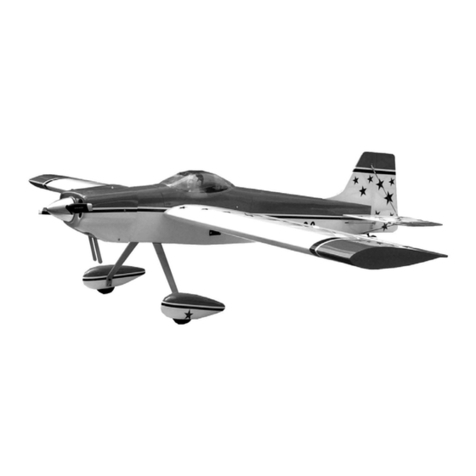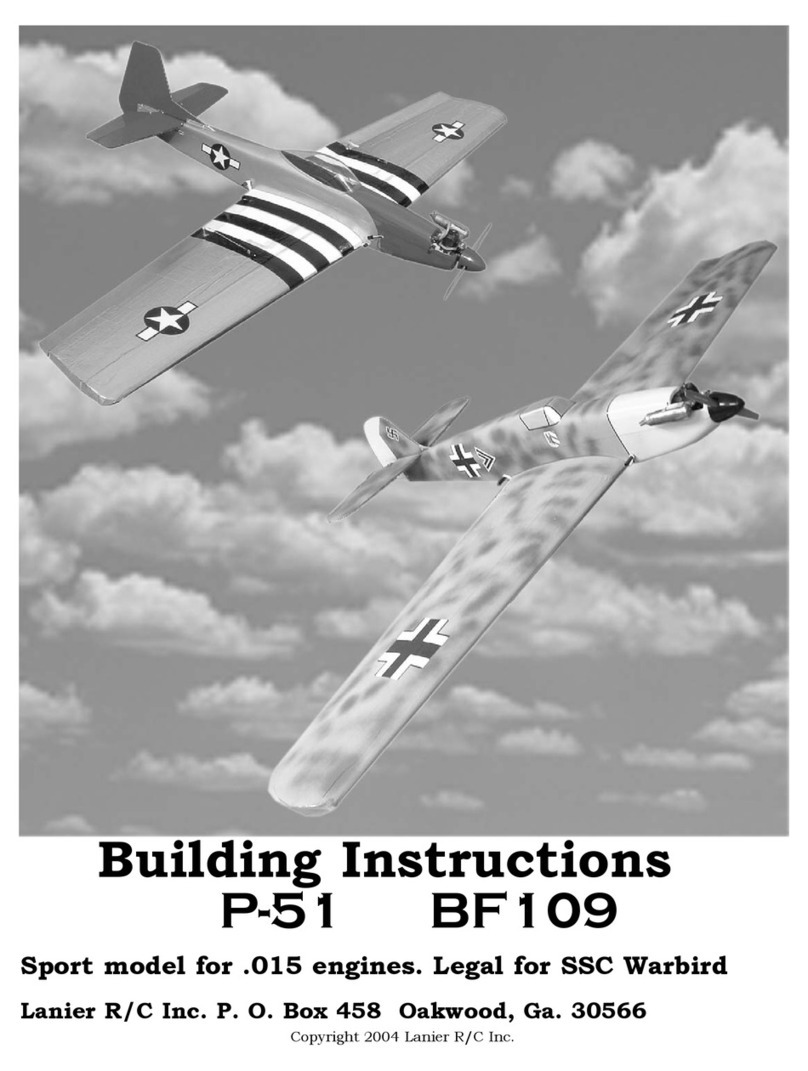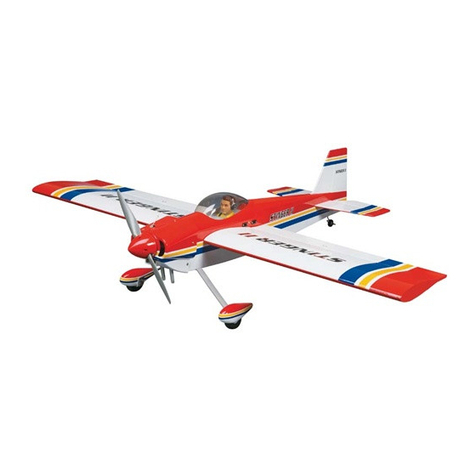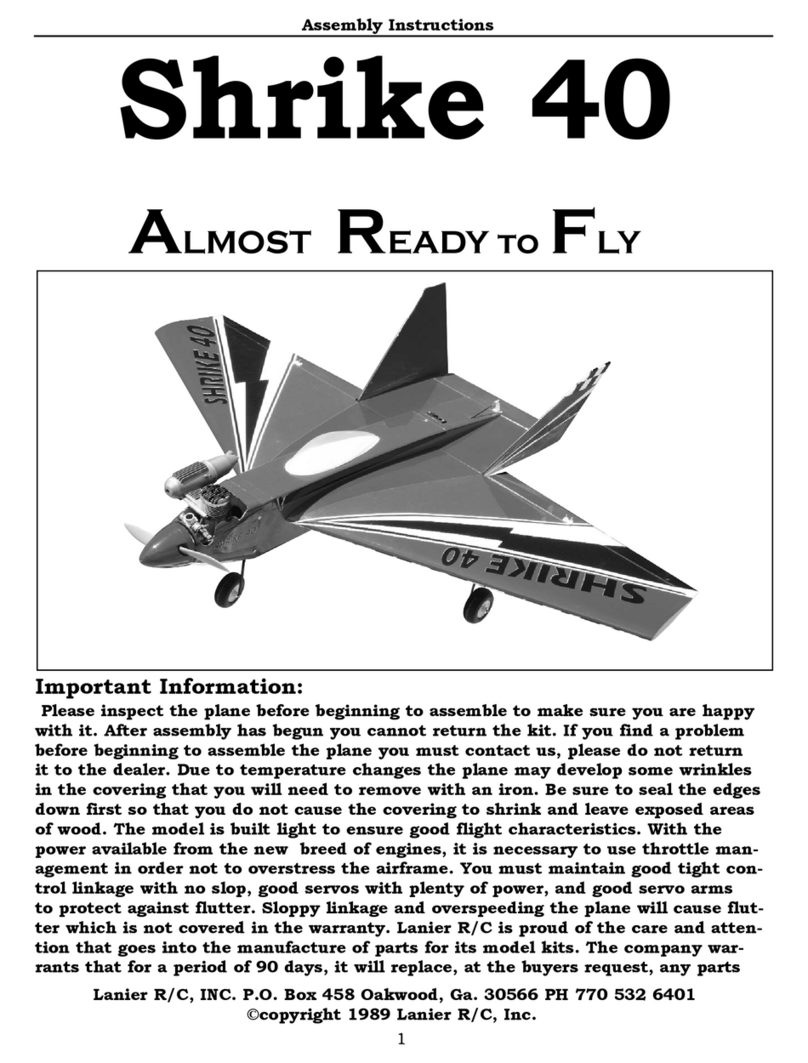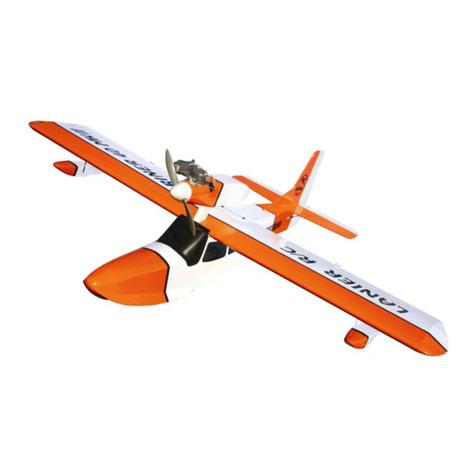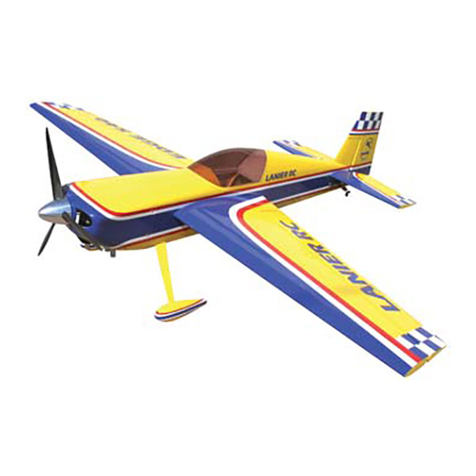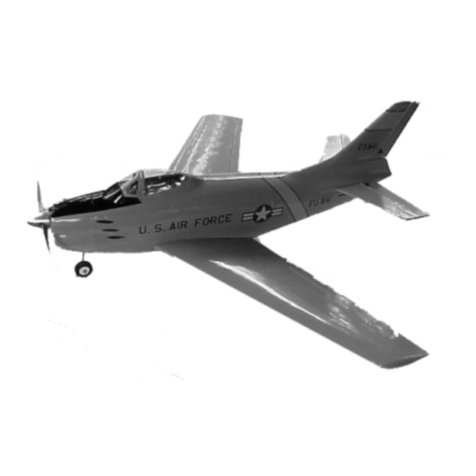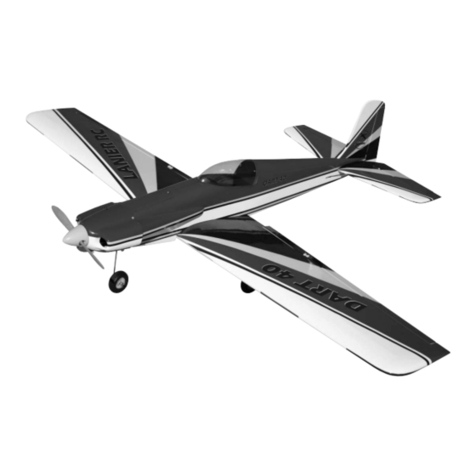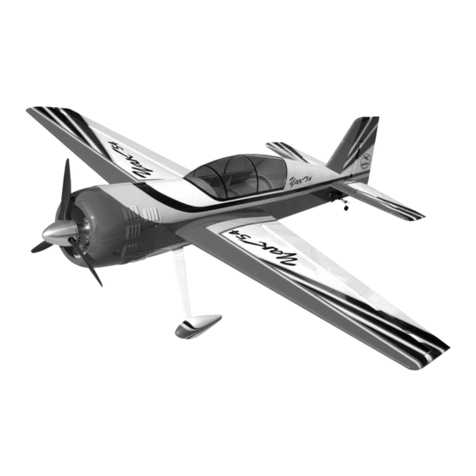
Lanier R/C
8. Mount the tail wheel using 3-#4 x ½” sheet metal
screws. Use the first three holes in the mount.
9. Mount the tail wheel on the center of the fuselage
flush with the back edge. Hold in place and drill three 1/16”
holes through three holes in the mount. Drive in the screws
and tighten them.
10. Locate the spring and cut off excess wire, 1-1/4” from
spring, on the long end. Now bend a ¼”leg at 90 degree on
that end. Place the opposite end in the small hole on the
brassfitting at top of bearing shaft. Note where ¼” leg ends
onbottomofrudder. Markanddrilla1/16”hole. Note:make
sure the wheel is properly aligned before drill-ing the hole.
Harden the hole with thin CA. Insert the ¼” leg in the hole,
insert a #4 x ½” sheet metal screw in the same hole and
tighten. Do not over tighten and strip the threads. Use a
drop of thin CA to secure the screw.
11. Prepare the servos with the proper servo arm for the
rudder and elevators. Mount them in the servo wells with
#2x½” sheetmetal screws(not supplied) Locatethe short
pushrodsfor theelevatorsand cut 3/8”off both endsof each
one. ADremelcut-offwheelworksfinehere. Mounta#4hex
nut on the end ofeachpushrod. Nowmounta4-40clevis on
the ends of each..
12. Center the servo and elevator. Tape the elevator at
the tip so that it will not move. Adjust the clevises on the
pushrodtofitandhookuptoservoarmandcontrolhorn. Slip
on thesafetyclipsandtightenthehexnutsagainsttheclevis.
13. The rudder pushrod is the proper length. Assemble in
thesamemannerasdescribedabove. Note: We recommendNote: We recommend
you use two servos on the rudder, the two pushrods will actyou use two servos on the rudder, the two pushrods will act
asapullasapull--pullsetuppropullsetupprovidingmaximumforcewithnoflexingofvidingmaximumforcewithnoflexingof
the pushrods..the pushrods..
14. When using two servos on the elevators, it is necessaryWhen using two servos on the elevators, it is necessary
to use a “Y” connector with a servo reverser in one of theto use a “Y” connector with a servo reverser in one of the
“Y’s”thereby allowingbothservostobemountedinthesame“Y’s”therebyallowingbothservostobemountedinthe same
position. Maxx Productsposition. Maxx Products International (see notes) hasoneInternational(see notes)has one
withan internalpotsoadjustmentcanbemadeelectricallytowithaninternalpotsoadjustment canbemadeelectrically to
one elevator. Their “Y” connector, called the Miracle “Y”one elevator. Their “Y” connector, called the Miracle “Y”
Connector,has extra long leads.Of course withanexpensiveConnector,has extra long leads.Of course withanexpensive
computerradio youcan always connectcomputerradio youcan always connect the elevators in twothe elevators in two
differentchannelstherebyeliminatingtheneedfortheMiracledifferentchannelstherebyeliminatingtheneedfortheMiracle
“Y” Connector. However, you will need servo lead extensions.“Y” Connector. However, you will need servo lead extensions.
The rudder with two servos will then need a plain “Y”The rudder with two servos will then need a plain “Y”
connector and a servo lead extension.connector and a servo lead extension.
MOUNTING THEMOUNTING THE LANDING GEARLANDING GEAR
